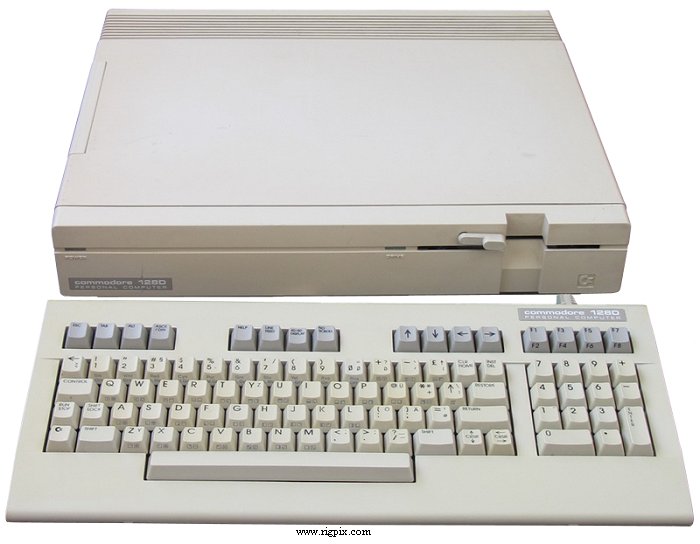| Type: | 8-bit home computer |
| CPU: | MOS 8502 @ 1-2 MHz & Zilog Z80A @ 4 MHz |
| Operating system: | Commodore Basic 7.0 & CP/M 3.0 |
| Memory: | ROM: 72 KB
RAM: 128 KB (2*64 KB banks). Expandable to 512 KB |
| Sound: | "SID" - MOS 8580
3 voices, multimode filter, 3 ring modulators. Stereo |
| Graphics: | "VIC-II" - MOS 8564 (NTSC) / 8566 (PAL)
Text: 40*25 characters
320*200 pixels
160*200 pixels
16 colors. Sprites
"VDC" - MOS 8563 (RGBI)
Text: 80*25 or 80*50 characters
640*200 pixels
640*400 pixels
320*200 pixels
16 colors. Blitter |
| Storage: | Tape recorder
Integrated 5.25" floppy, 340 KB (a modified 1571D) |
| Input: | External keyboard
Optional mouse |
| Connectivity: | Cartridge slot
RF out
Video/audio out
80 column RGBI output
Floppy/printer port
Tape recorder I/O
TTL-RS232
User port
2*game ports |
| Voltage: | Mains |
| Power consumption: | |
| Dimensions (W*H*D): | ? Kg (?") |
| Weight: | ? Kg (? lbs) |
| Manufactured: | 1985-1989 (Discontinued) |
| Other: |
Commodore's last commercial 8-bit machine, which was able to run in three
different modes: C128 mode, C64 mode and CP/M mode.
This first version of 128D was housed in a plastic case and was not released
in the USA because it failed the FCC regulations for RF emissions.
|
| Related documents: |
AEA Doctor DX (DDX-64): User manual (113 KB, in swedish)
|
| Modifications: | |
| Notable "ham" software: |
C64 mode: Digicom 64 - Packet TNC software for simple modem
C64 mode: Doctor DX - CQWW CW contest simulator (By AEA)
C64 mode: Doctor QSO - CW ragchew simulator (By AEA)
C64 mode: MBA-TOR - ASCII/CW/RTTY/AMTOR software (By AEA)
|
| Original options/accessories: |
1084S
1570
1571
1581 |
Color monitor, 14"
5.25" floppy, single sided
5.25" floppy, double sided
3.5" floppy |
|








